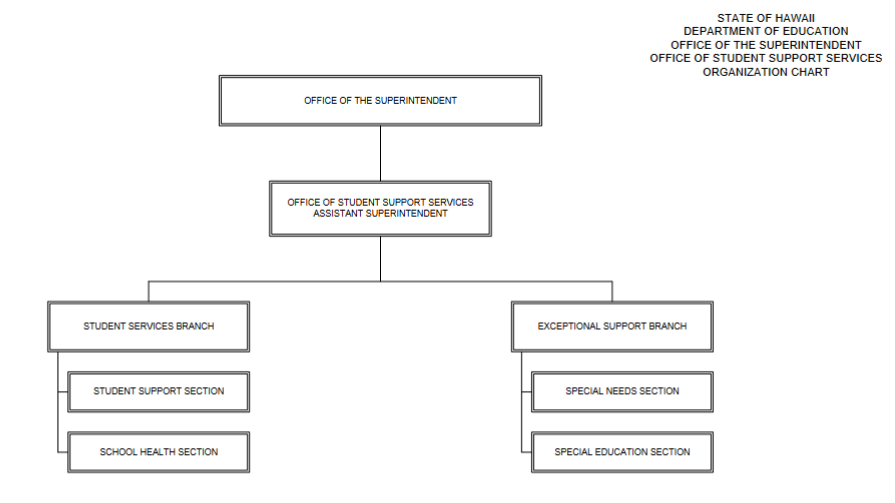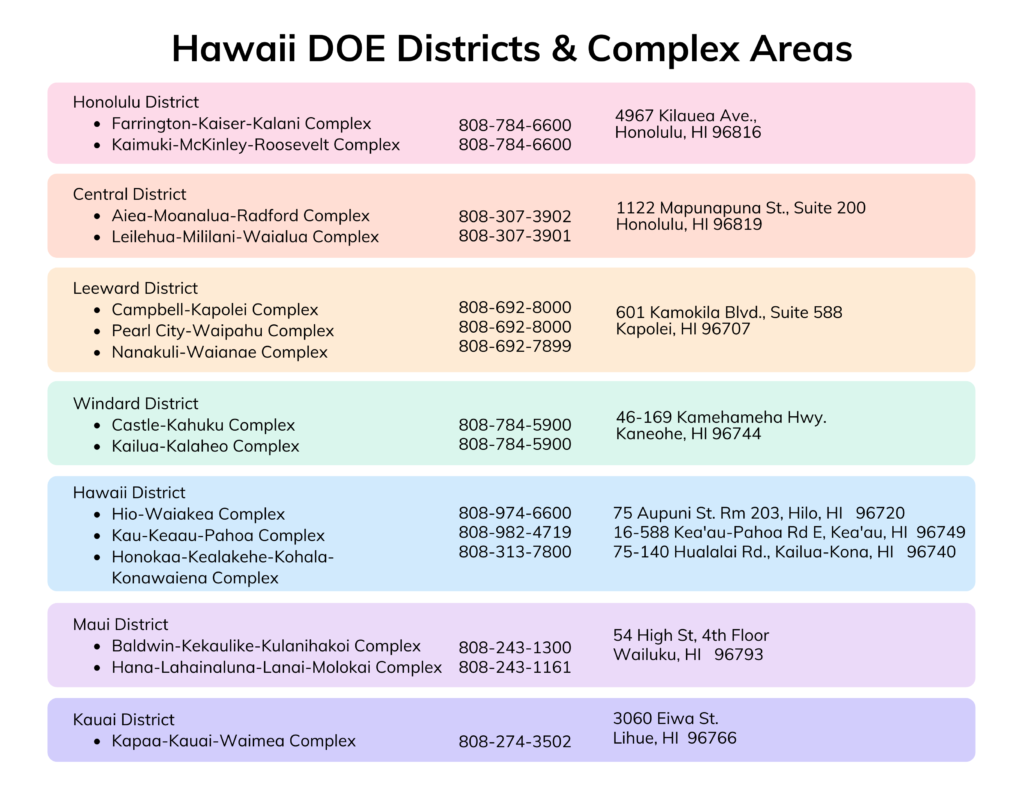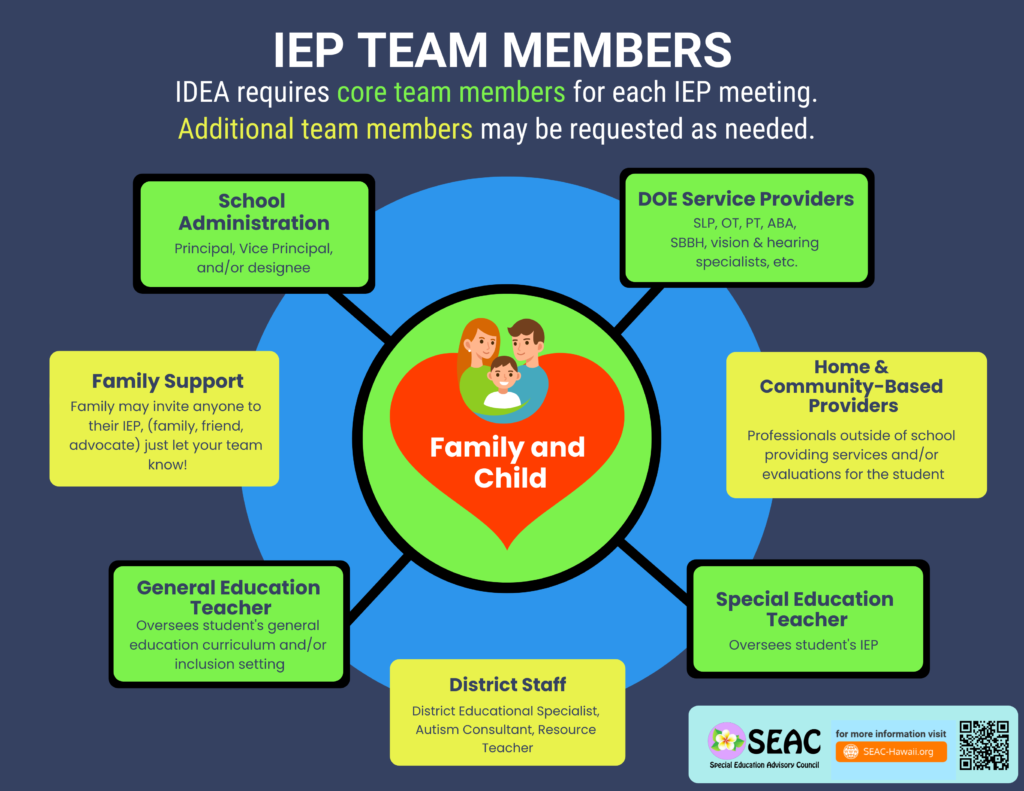Hawaii’s 3-Tiered System
Hawaii’s Department of Education is unique in that we are one unified school district across the state. We have one Superintendent and one Governor-appointed Board of Education, with policies that affect all students, staff and schools in Hawaii. Our islands are sectioned into 7 districts and 15 Complex Areas (CAs). A Complex is a high school and it’s feeder middle and elementary schools. A Complex Area are regional groupings of Complexes. Each Complex Area has their own Complex Area Superintendent (CAS), responsible for all the schools in their area. You can find a list of all districts and Complex Areas on the Hawaii DOE website.
Hawaii has a 3 tiered system, when it comes to our Department of Education: state offices, district/complex offices, and neighborhood schools. To view a PDF of the organizational charts for DOE, click here. The first tier is the state office, also known as the SEA or State Education Agency. The Department’s state-level offices are responsible for curriculum vision and framework, compliance with state and federal regulations, student testing and support, data management, civil rights, education improvement, military outreach and statewide internal and external communications. (source) The SEA is broken down into 3 groups: Offices, Branches and Sections.

- The Office of Student Support Services is where you will find the branches responsible for special education and related supports and services.
- The Student Services Branch (SSB) is where you will find 3 sections, the Student Support Section, School Health Section and Medicaid Section. The SSB provides schools and complex areas with resources, training and technical assistance to address the physical health, behavioral, academic, social-emotional needs of all students.
- The Exceptional Support Branch (ESB) has 2 sections, the Special Education Section and the Special Needs Section. The primary goal of both sections within the ESB is to provide leadership and support for students with disabilities who receive special education and related services throughout Hawaii Public and Charter schools.
The second tier in Hawaii’s education system are the Districts and Complex Areas, also known as the LEA or Local Education Agency. All Department schools are rolled into what’s known as a Complex, which includes a high school and all the elementary and middle schools that feed into it. Anywhere from one to three Complex Areas are grouped into a District and each Complex has its own Complex Area Superintendent (CAS) and support staff. The CAS reports to the Deputy Superintendent in the state office. Within the Complex Areas, there is a position called a District Educational Specialist. This position is responsible for making sure the schools are providing appropriate special education instruction, provide training and technical support to schools and staff, provide information to families and can sometimes attend an IEP meeting to assist both parents and schools to support student needs. Below is a graphic of the 7 districts across the state, and the 15 Complex Areas. To find the name of the current CAS, click here.

The third tier is your local, neighborhood school. Principals are in charge of what happens at the school and report to the CAS. If you would like to see which elementary, middle and high school your child will attend in your neighborhood, the Department has a cool map app on their School Finder page called the School Site Locator. Plug in your address and see a map of your school area.
If you have a concern about your child’s education at your school, use the “chain of command” hierarchy to get your concerns heard and to find a solution. Be sure to document, in writing, every time you contact school personnel. This will help you keep your correspondence straight, especially if you call different offices.
- Teacher: this can be your general ed or special ed teacher.
- Care Coordinator: if your special education teacher is not your child’s care coordinator for the IEP, it could be the Special Education Chair at your school.
- Vice Principal or Principal: the VP may attend your IEP meetings, but the buck stops with the principal at the school.
- District Educational Specialist (DES): at the district or Complex Area, DES staff work with schools to provide training, technical support and answer questions about IDEA and Chapter 60 and how it relates to a child’s IEP.
- Complex Area Superintendent (CAS): the CAS is responsible for all schools in their area. If you cannot resolve your concern at the school level, or with the help of the DES, you may want to speak with the CAS.
- State offices: If all else fails or your concern has not been resolved, you may want to submit a written complaint. Contact the Monitoring and Compliance Office to file a written complaint. You can also request mediation with the school or file for due process. Click here for contact info and check out our tab on Conflict Resolution for more details.
Hawaii IEP Teams
Let’s take a look at what your IEP Team can look like. The green sections are your core team members, but depending on your child’s needs, you do not need everyone in the green service provider box. The people in the yellow sections can be added as needed. You can invite anyone to attend an IEP with you, but you must let the school know they will be attending. If you bring an advocate or lawyer, the school may also want to bring someone of a similar capacity. Home and Community-Based Providers could be someone from DVR or DDD (Dept. of Vocational Rehab / Developmental Disabilities Division). Schools cannot invite them without your permission, so be sure to let them know you’d like them to be invited to your next meeting, especially when your child is in high school.
Want to see more on this page? Email us at SPIN@doh.hawaii.gov and let us know what kind of resources would be helpful to you.





